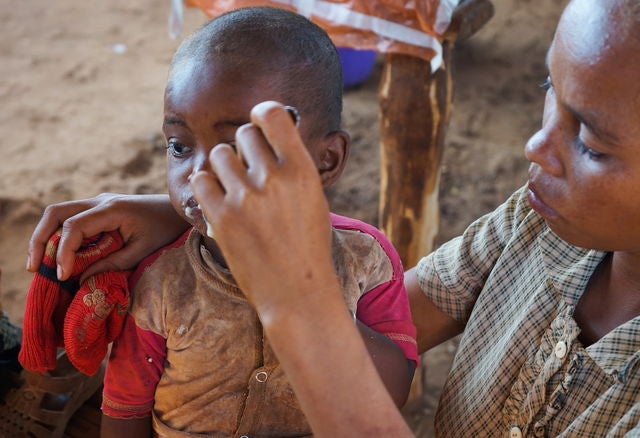Researchers: extreme heat worsens child malnutrition
Exposure to high temperatures increases both chronic and acute malnutrition among infants and young children in low-income countries – threatening to reverse decades of progress, authors say
Researchers: extreme heat worsens child malnutrition

New research conducted in West Africa has linked exposure to high temperatures and childhood malnutrition.
The study published in the Journal of Environmental Economics and Management shows that children in low-income countries exposed to high temperatures over an extended period experienced both chronic and acute malnutrition, resulting in arrested growth and an inability to thrive.
“We’re talking about children at a very young age that will have changes for the rest of their lives, so this is permanently scarring their potential,” Ariel Ortiz-Bobea, an associate professor and applied agricultural economist at Cornell University and a study co-author, said in a statement. “What we are doing to reduce global poverty is being eroded by our lack of action on climate.”
The researchers examined weather data between 1993 and 2014, and data on more 32,000 West African children ages three to 36 months, and found that average heat exposure had increased the prevalence of stunting from chronic malnutrition by 12 percent and of low weight from acute malnutrition by 29 percent.
They also estimated that if average global temperatures rise by two degrees Celsius – which is believed to be likely without significant reductions in carbon emissions – the average effect of heat exposure on stunting would nearly double, eliminating previous gains made over the past decades.
West Africa was selected for the study since it has the highest rate of wasting among children aged under five: 8.5 percent compared to 7.4 percent across the rest of the continent. It’s estimated that the region has a stunting rate of 31.4 percent. The research examined Benin, Burkina Faso, Ivory Coast, Ghana, and Togo.
Previous studies have explored the effects of heat exposure in utero, but children are at their most vulnerable between the ages of three and 36 months. Additionally, prior work focused on the effects of heat as it relates to agriculture and, in turn, malnutrition and its effects. However, it is believed that the new study's approach may provide a more accurate picture by examining other issues, including chronic and acute illness, weakened immunity, and higher susceptibility to disease.
How can we help you?
believes that the quickest path to improving health outcomes to identify positive outliers in health and help leaders implement lessons in their own countries.
With our network of in-country and cross-country partners, we research countries that have made extraordinary progress in important health outcomes and share actionable lessons with public health decisionmakers.
Our research can support you to learn about a new issue, design a new policy, or implement a new program by providing context-specific recommendations rooted in Exemplar findings. Our decision-support offerings include courses, workshops, peer-to-peer collaboration support, tailored analyses, and sub-national research.
If you'd like to find out more about how we could help you, please click . Please consider so you never miss new insights from Exemplar countries. You can also follow us on Twitter and LinkedIn.
